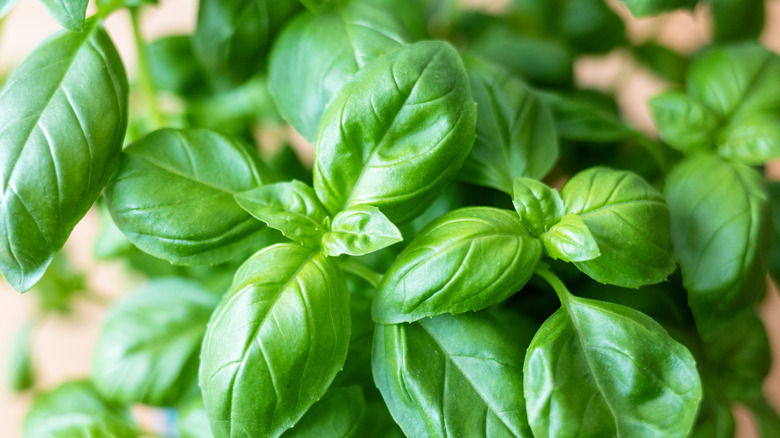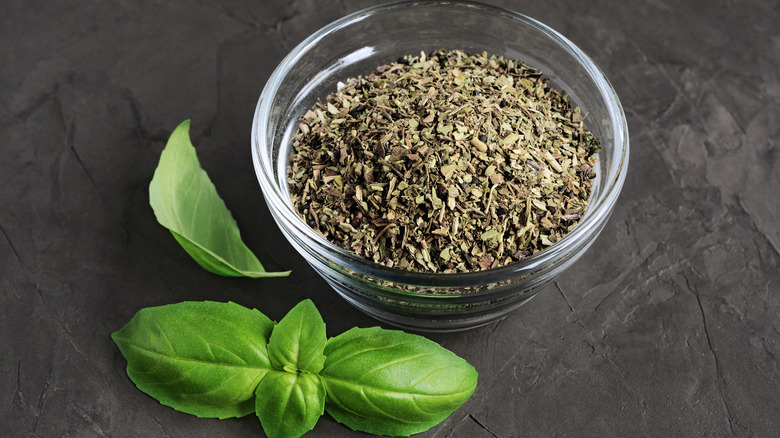Why You Shouldn't Add Fresh Basil To A Dish Too Early
Originating from Italy and now embraced in cooking recipes around the world, basil is a beloved herb that adds a touch of freshness and licorice-like sweetness to any dish you prepare. However, cooking with basil requires a delicate touch, whether dried or fresh. Without the right technique, the basil's delightful herbal flavor can be washed away.
To fully enjoy the magic of fresh basil — just like with other herbs — the key is to add it as late as possible in the cooking process. Heating fresh basil for too long will cause it to wilt, and the precious essential oils in the leaves will evaporate. These essential oils are what give basil its amazing aroma and sweet taste, and once they're gone, the herb loses much of its potency.
For the best results, when preparing dishes like soups, stews, sauces, and sautés, wait until you've reached the final stages of cooking, and then drop in a few plucked leaves or chopped basil. As for pizza and pasta, fresh basil makes an appealing garnish.
What are the rules for dried basil?
Unlike its fresh counterpart, dried basil follows an entirely different set of rules. Instead of adding it late in the cooking process, you'll need to introduce dried basil early on. Drying removes the moisture from the leaves, making it challenging for them to release their essential oils effectively without water. To make the most of dried basil, you must allow it ample time to rehydrate, allowing its aroma and flavor to bloom.
For optimal results, it's recommended to add dried basil to your dish at least 20 minutes before finishing the cooking. This gives the leaves enough time to soak up the juices and moisture from the other ingredients, enhancing the overall flavor profile.
However, exercise caution when using dried basil in recipes that involve a lot of direct heat, like grilled recipes, as the leaves may burn and develop an unpleasant taste. It's best to opt for fresh basil leaves for such recipes.

